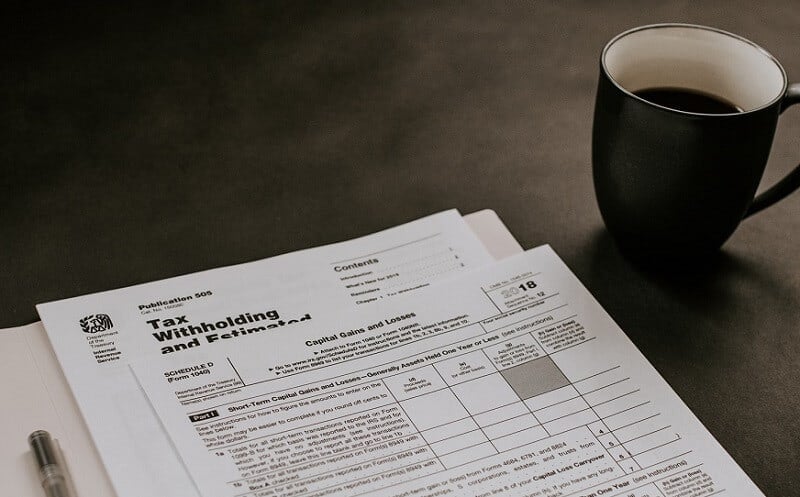
The long-term returns seem attractive, and it is easy to start investing. But you must have realistic expectations.
By Guy Avtalyon
Good returns on investment is what every single investor wants. But some have unreasonable expectations. Especially beginners. They are hunting stupid high returns on investments and lose money. No matter what asset class is, they are looking for high rates of return. Nothing is wrong with that, but a dose of reality is necessary for investing. Dreaming is okay, of course since it can motivate us to reach our goals but if our dreams are unrealistic it can deliver us the stress when we unveil that reality isn’t like our dreams.
So, everyone including beginners in the stock market must understand what are good returns on investment. We would all like to become rich overnight, that is a legit dream but the real-life is something different. One of the main problems is that beginners don’t understand the effect of compounding nor how it works. Most of them don’t know what good returns on investment means, how much it is.
First of all, temper your expectations.
Over almost the last 100 years, the stock market’s average return is about 10% per year. But returns are infrequently average. So, if you are one of the new investors you have to know several things about what good returns on investment is.
What are good returns on investment?
You have to know that historical data shows that the average stock market return is 10%. Are you surprised? What did you expect? Oh, we know! You heard the stocks are among the riskiest investments and the high risk may provide you a high potential reward, right? That’s true but it will not happen overnight. Let’s go back to average stock returns.
The S&P 500 Index is the benchmark measure for annual returns. When we said the average annual return is 10% it wasn’t quite true. The truth is that you have to reduce this 10% by inflation. For example, if you start to invest now you can expect to lose buying power of 2-3% per year which is caused by inflation.
The stock market is directed on long-term investments. That means you can invest your extra or saved money you will not need for the next five years or longer. If you don’t like this you may prefer a shorter investing period, for example, a year or two. Well, then the stock market isn’t for you. Choose one of the lower-risk alternatives. For instance, a savings account. Yes, you will have the lower returns, but you’ll be protected from stock’s volatility.
As we mentioned above, the average return per year is 10%, but it is actually far away from average. There were periods when it was dramatically lower but also the periods when the returns were much, much higher. That’s due to the stock’s volatility. We have to say and this may sound illogical for beginners, but even during the volatile market’s years, returns can be good.
Your expectations must be fair
Honestly, you have to learn this. Especially if you’re a new investor. You may think you can earn 25% on your stock investments over several decades. We have to tell you, your expectations are extremely big. It’s not going to happen. Maybe this is rude to say, but that’s insane. Yes, we know you found someone out there who promised you that high returns, but you have to understand cush lied to you. Such is counting on your lack of experience, and on your greed. Are you greedy? Go to the casino! Start gambling! Stock investing is a serious job, hard work, also connected with a lot of pleasure and passion with one single most important goal – to have good returns on investment and over time, to provide financial security for yourself. Well, and maybe, just maybe you’ll become rich.
So, your financial foundation should never be based on dangerous opinions and actions. Don’t be irresponsible. What you really need is your investment to provide you a nice retirement, you wouldn’t like to end up with less money than you expected.
The meaning of good returns on investment can be confusing for someone, particularly young investors because when you enter the stock market you might know only about a 10% annual return rate. But keep in mind, you don’t have guarantees that they are going to repeat themselves. The returns on investments never were a smooth or upward path. remember, markets are volatile and you may suffer great losses over time. But what is important and everyone should know that that’s the nature of the free-market. Over a long-time period, you’ll beat the market if you follow some rules.
How to calculate the rate of return
Let’s say you already have determined your investing goals. You clearly know what your target is. Also, you have to identify the amount of capital and time you have to invest. All information you need is in front of you. So, let’s see the magic of compounding.
For example, you have $2.000 to invest. Assume that the annual rate of return is 10%. After one year you’ll have $2.200, right? But what if you want to sell your whole investment after 2 years, for example, for $3.000. Super done! Your profit is $1.000 which is a 50% return. Amazing! Oh, wait! You have to pay capital gains taxes. Take away 15% from your gain. Well, your profit isn’t $1.000, it is $850. You’re left with $2.850. Well, you still have good returns on your investment after two years. It is 42,50% now. Did we have inflation? Of course, we did. So, you have to count inflation of 4% for 2 years.
Let’s do it.
$2,850×0.96×0.96=$2,626.56
That is 31.32% real return of your investment. This $2.626 amount still isn’t bad but it’s far away from your $3.000 and 50% where we started this calculation.
Look, the annual rate represents the profit you earn on your investment per year, or how much will you get in return for each dollar invested every year.
There is a simpler calculation. Just find a simple percentage. For example, you invested $1.000 and your gain is $300. What will your return be?
(300/1000)x100 = 0,3×100 = 30%
This approximative value. But if you want to know the exact you’ll need the first calculation we showed you. That is a well-known ROI, return on investment.
Can the stock market give you good returns on investment?
The stock market is unstable and unpredictable, so you’ll never have any guarantees there. But if you consider this 10% average return you’ll understand that investing in stocks may provide you financial security in the long run.
What are the good returns on investment today?
Well, the answer is pretty complex but to make it simpler, use this rule of thumb: If the recent returns were higher than average, the future returns will be lower.
That’s why it is much better to calculate, for example, 6% or 7% of the average annual of return when estimating your returns over time. Because, as you can see, this average return is rare. It is higher or lower. Also, there is some psychological effect, if you expect too high returns you’ll be disappointed if your investment never gives you that. Also, you’ll be glad if your investments beat your expectations.
The best approach in the stock market, if you want to make real money, is to buy stocks at good prices and sell them at a profit. What is a good price? To figure it out you’ll have to know how much money you want to get when you sell it.
Good returns on investment for an active investor is 15% per year. For this to reach you’ll need to be aggressive in looking for bargains. It isn’t hard to achieve. For example, your buying power can be doubled every 6 years if you have average annual returns of 12% after you pay all taxes, also, count the inflation for each year. This is one way to beat the stock market. The other is to become a trader but a smart one. The coronavirus is causing people from almost all parts of the globe to halt their activities. People are urged to stay home, schools are moving to online learning. Take this as an advantage and learn something useful, why not?





